




X . I
reviews directly instinctively core parts of the house or building consists of several key principles
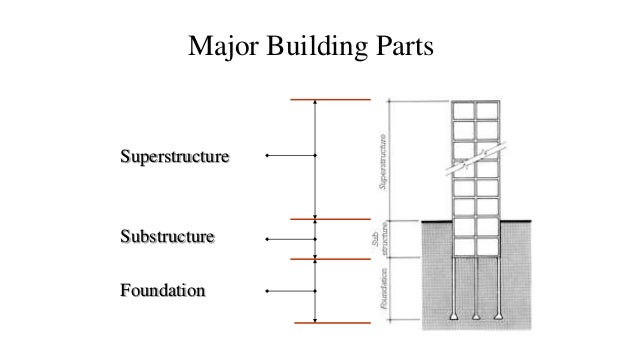

Foundation
Reinforced concrete ( Sloof , Columns, Beams Ring, Beam and Plate Concrete)
Walls, and
Roof
In addition to (but important), in making homes and buildings is no such thing ceiling work, sills and floors. In addition, the house must also be equipped with electrical installation, installation of water and sanitation and the environment that sustains the structure of the interrelationships between Abiotic and biotic environment. Let's discuss them one by one .
FoundationThe foundation is a basic foundation of a house or other building. The strength of a house is determined by the foundation. With the foundation, the stability of a building of the loads and forces (both outside and inside, both vertical and horizontal) can be assured. flashback expression of the Lord Jesus in Luke 6: 48 to say; He is like a man who built a house: who dug in - deep and laid the foundation on rock. When it comes a flood hit that house, that house can not shake it, because it is solidly built though he meant the words of his, but here we are taught the reality that so for us the servant of the servant of light where the Father who is also a businessman on earth advised to make in general the proper foundation, we go back to the realities of how to make homes and buildings there are two kinds of foundation, the foundation of shallow and deep foundations. Shallow foundation is used when the building located on it is not too big. The house is simple example. This foundation can also be used for other public buildings that are on hard ground. Which is included in the shallow foundation is the foundation stone of the local, lane foundation stone, the foundation footprint / local slab (concrete), concrete strip foundation, foundation and pile foundation strouspile wood .


While the foundation is the foundation used in buildings on soft ground. The foundation is also used on buildings with enough stretch width (distance between columns 6 m) and multi - storey buildings. It also includes, among other things pile foundation (concrete, iron, steel pipes), the foundation sinks, bor pile foundation and others.

Reinforced concreteConcrete is a unit of work scope. Were included in this work that is sloop, columns, beams, beams and concrete slab. Sloop is a reinforced concrete that is placed horizontally above the foundation. The point is to flatten the load received column to the foundation. So that each load received a column, will be evenly spread over the entire building a stronger foundation so that in the structure. In addition, the sloop serves as a binder between the foundation walls with columns.Then, what is meant by that column? Columns of concrete (concrete pole) is a reinforced concrete that is placed in a vertical position. The column serves as a binder pair brick or stone hubble and successor load from the top toward the sloop which was subsequently accepted by the foundation.Then the ring beam. It is a reinforced concrete located above the masonry. Serves as a pedestal roof construction and masonry fastener upper part so as masonry does not collapse.Furthermore, namely beams. The beam is part of the structure is used as a binder holder floor and upper floor columns. Its function is as a horizontal reinforcing frame buildings to be burdens.While the latter is a concrete plate, which functions as the floor in multistory buildings.WallFormerly the wall serves as a load-bearing structure over to the foundation. But now it is not our function to apply again. Now the wall is just as cover and protection from the weather outside. His easygoing, a house will not collapse if there were no walls. Nevertheless, an important wall as:Separator inter-spaceRetaining light, wind, rain, floods, etc.Giver artistic function values, and lifestyle show who the owner of the house are made.RoofRoof work consists of three parts, namely horses, the roof frame and roofing (tile). Horses is an arrangement of trusses that support the roof load. The horses consists of:Reng (5/3)Purlins (8/12)Kaso / Usuk (5/7)Nok / ridge (8/12)
it looks easy but in every manufacturing of parts of the house or building, there are calculations that must be done carefully. And also requires "scientific instinct and instinct" an engineer, so I can decide the problems of unplanned but bound to happen because an assumption would require a rational approach to the real world.



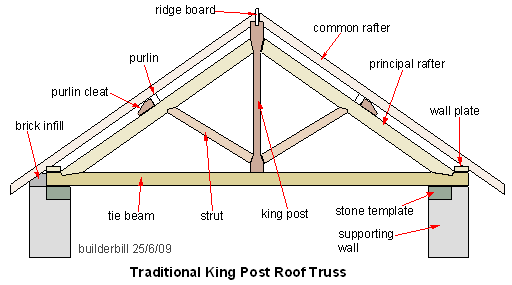
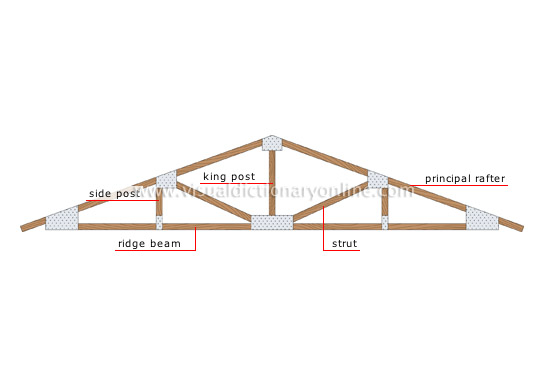



X . II
How to Calculate the Volume Material In Making Foundations
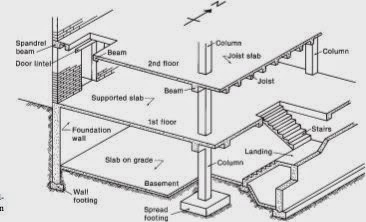
Here's How to Calculate the Volume Material In Making The foundation stone, foundation used as a drag home or building so that construction can stand firm on it. at the time of the foundation will make us think how much material will be needed, so it can be prepared in advance :-)
eg the foundation stone of the picture look like this:
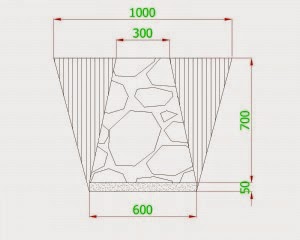
A trapezoidal shape with a total length of the foundation is 35 m 'width above the foundation 30 cm while under the foundation 60 cm wide and 70 cm high and 35 m long foundation.
The first time we see the existing work items on the foundation work are:
1. Employment Bow plank
2. Work excavation
3. The sand is work
4. The work of the foundation stone pair 1: 5
Next is calculating the volume of each item of work
Count assuming the environmental conditions remain:1. Employment Bowplankvolume 35 m 'timber = 0:01 m3 m3 x 35 = 0:350.02kg nails rounded x35 = 0.7 kg 1 kgBowplank is used for measurement and an elbow to the foundation layout to fit the plan.2. Work excavationexcavation volume = ((0.6 + 0.9) / 2) x0.75 = 0.5625total volume of excavation tanh = 0.5625 x35 = 19.6875 m3"Do not need material" in certain situations that have difficulty in disposing of the results of excavation will require a special effort to overcome such as planning a construction area requiring land fill :-) it is commonly referred to as cutting fill.3. Employment sand isThe volume of sand is = 0.6 × 0:05 = 0:09the total volume of sand = 12:09 x35 = 3.15urug sand m3 x 3:15 = 1:05 = 3.3075 m3The amount of sand 1 average truck is 4m3 so we could buy a truck of sand for the foundation work, but each truck has a different volume.4. Works pair stone 1: 5Sectional area of trapezoidal masonry times = ((0.6 + 0.3) / 2) x0.7 = 0.315 m2total volume masonry time = 0.315 x35 = 11,025 m3stone = 1.2 m3 m3 x 11,025 = 13:23Sand = 0:54 m3 x 11,025 = 5.9535 m3Zak cement = 2.68 x 11,025 = 29 547 bags of cement in the round up 30 sacks5. The land fill job backthe volume of land fill back = 19.6875 - 11,025 - 3.3075"Taken from the soil of an excavated"so according to calculations on the volume of material required is- Sand = 3.3075 + 5.9563 = 9.2638 m3- Stone = 13:23 m3- Cement = 30 sacks- Nails = 1 kg- Board bow plank = 0.35 The m3
X . III
The characteristic features Building Strong Foundations
The house must be supported by a solid foundation of strong and durable, and what are the characteristics of a strong house foundation so that it can be prepared prior to the process of development takes place. Certainly not very good if the house that we have built the most beautiful architectural art turned out to collapse just because of the foundation structure in weak condition. although its location is often hidden but its function as very Vital to affect the strength of the construction and development of buildings next if in conditioning your needs, therefore it is necessary to plan carefully to determine the size and type of foundation materials are secure yet economical so as to save the cost of building a house. Let's start by making a list of the various terms of building foundations nice.


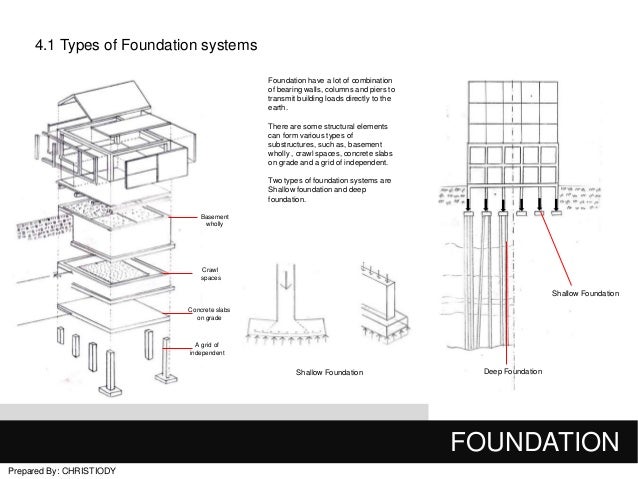
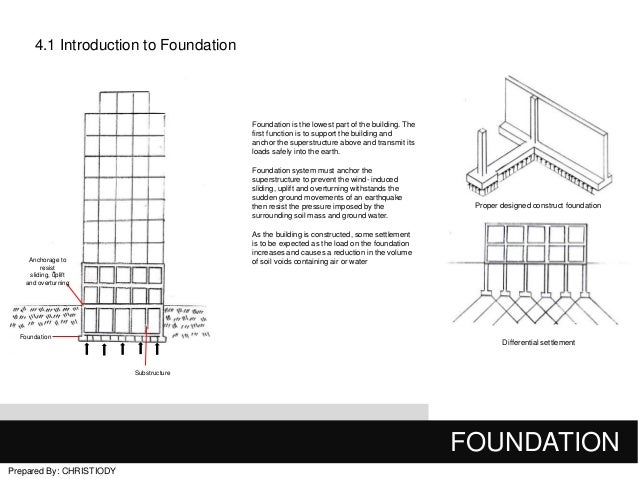
The characteristic features Building Strong Foundations1. Can withstand the loads that exist on it, namely construction loads, live loads, wind loads, earthquake loads etc. So that the building does not decline, cracking or even collapse.2. Made of building a strong, nice and durable so it can function within a period of home use plan.3. Resistant to a variety of organisms and harmful chemicals that can damage building construction.4. Type the foundation adapted to the conditions of land and buildings, for example, could use the soft soil foundation type chicken scratch, simply use the home first floor of the foundation stone while the second floor houses the foundation needs to be added foot plate at the points of the main column.5. There are additional safety factor to bear the burden of the foundation, it is to anticipate the future if there are additional building construction with the burden of unplanned earlier so it could be in danger of collapse.6. If using reinforcement will have to use concrete cover thick enough so as not to rust so could lead to a weakening of the foundation structure.Given the importance of the foundation of the house is necessary to note well when planning to be determined the type of construction of the most powerful and cost, during the process of development is also needed extra supervision so that what is built can be completely in accordance with what has been planned, whether it be from the side form the foundation, the size of the foundation and the correct method of implementation.
X . III
How to Make Concrete Columns On Building
How to create a column of reinforced concrete in the building is not as easy as building a dwelling house one floor, need precision and accuracy use the best working methods in order to produce excellent quality concrete columns and the cheapest. Making practical fields at the housing development process is quite simple and quick, which is to buy iron series of practical field and put them in the shop building with walls bes kisting brick or stone huble directly coupled wooden board then casting practical fields could already start to finish. While the construction of high-rise buildings of concrete columns rather long process, which is approximately as follows:

How to Make Concrete Columns On Building
1. In the planning stage we create design drawings to describe the shape of the building construction and determine the position of the column structure.2. Then do the calculations of building structures to get the column dimensions and solid building material to use yet economical.3. Conduct work measurement to determine the position of the columns of the building, it must be fitted in accordance with the plans. especially in high-rise buildings that tolerance of error is only about 1 cm, if one of the measures there was a risk of collapse of the building.4. Figure out reinforcement and shape iron pieces that need to be prepared. This is often referred to as iron bestek.5. Assembling iron scrap in accordance with the form of columns that have been planned.6. Install a series of metal reinforcement on the location of the column that will be created.7. Make form work / mold. can be made of wood, aluminum plate or other media that is able to withstand the process of casting the concrete work.8. Install form work thus wrapping reinforcement.9. To check the position of the form work is already in line with the size of the plan, and whether it has been completely upright.10. Calculating the required concrete requirements.11. Make the concrete, precast concrete or order in accordance with the quality of the original calculation result. for example, want to use the quality of concrete K-250, K-300, K-400 and so on.12. Did the job casting columns, cast high-determination can be carried out based on the size of the form work or measure the residual cast of the upper end of the form work.At every circuit on this work requires a joint checking whether by planning consultants, contractors, consultants and building owners supervisor directly. it is intended to minimize errors that may occur in the planning and implementation.
X . IIII
How and Technical Work Makes Sloof Building Form work
1. Sit Sloof mounted directly on the land ( Sloof Sit on Land)
a. After Iron Sloof installed (assembled) on the land, Board / Plywood Form work Sloof mounted upright on either side outside (Give Distance 2.5 s / d 3 cm) for Concrete Blanket. Then board / Plywood Form work is reinforced with wood Score from being damaged and broken during casting
b. Form work Sloof Installation can also be done before the Iron reinforcement Sloof installed. Scores and reinforced with wood at a certain distance so that the strong Form work and (not damaged when casting).
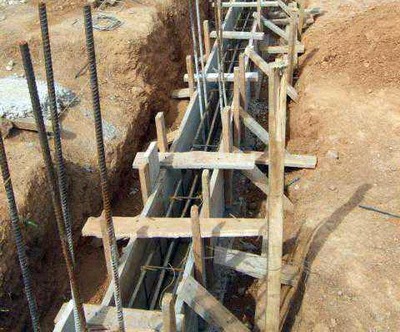
Sloop fitted Hanging (do not sit on the land)
a. Such conditions can occur because Tread Sloof (bottom) we plan turned out to be higher than the existing Land Surface.
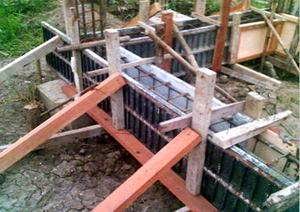
b. Form work is made by first making Board / Plywood on The Bottom Sloof (hanging on the land) and seconded to the country so as not sagged (curved). Then board / plywood mounted on both side walls (left and right), which is then reinforced with wood Scores on all sides deemed necessary (so that the form work is strong and is not broken at the time of casting).
X . IIIII
How to Make Sloof And Tips On Building
Sloop ie arrangement of the buildings located on the foundation, to contribute to leveling the load received by the foundation, also serves as a lock wall so that if the movement takes place on the ground, the walls did not collapse.
Sloop so very instrumental once on the strength of the building, the materials used are concrete with a mixture of 1 cement: 2 sand: 3 split (coral).
Dimensions sloop that is often used in residential buildings first floor, width 15 cm, height 20 cm, concrete steel main reinforcement using 4 pieces of 10 mm diameter (4 to 10), but for begel using 8 mm in diameter is 15 cm (d 8-15 ).
Below is a picture sloop for residential buildings first floor.
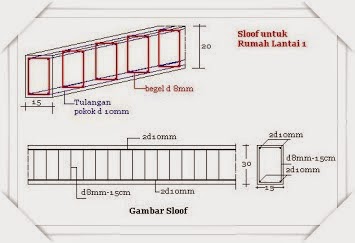
o shelter the second floor, sloof dimension that is often used is, width 20 cm height
30 cm, the main rebar 8 to 12 mm, begel d 8 - 10 cm.
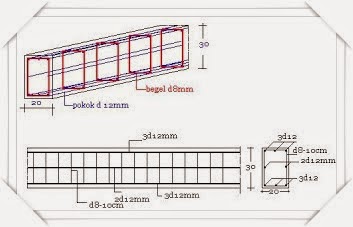
X . IIIIII
Definition And Function Sloof Concrete On Building
Sloop is a type of Reinforced Concrete Construction that is usually made on the building house or building, and its position is usually on the first floor (there is also a mention Basement). As we can see in Figure below

This sloop serves to bear expenses wall (can be wall of bricks, brick, etc.), So the walls are "sitting" on a solid concrete, so it does not happen "and a decrease in movement" that could lead to the wall became Cracked or Broken.
So to say Sloof also one of the foundation for the house. Specifically, is to support the load-bearing walls of the house. When categorized Sloof is included in Ongoing foundation.
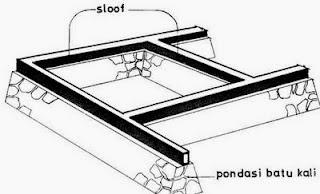
Sloop is a type of Reinforced Concrete Construction deliberate specially designed cross-sectional area and the amount of iron installation, tailored to the needs of the expenses will be borne by the sloop later.
To determine the cross-section area (size of this Sloof), required "Calculation Technical Right" so that the Sloof later "actually able" to assume Expenses Brick Wall thereon later .
X . IIIIIII
Definition Meaning Boplang / bouwplank Building
Boplang is a technical term that comes from Dutch: bouwplank, which is straight and flat boards are mounted on the periphery or the corners of the land that is planned to be established building.
Boplang mounted a bit far from the building to be erected. Nailed on wooden stakes that is located at least one meter from the building to be erected and 0.5 meters - 0,6 m in height above the highest point of the building that is being done.
X . IIIIIIIII
foundation engineering building and smart electronic home
Home automation
While there are many competing vendors, there are very few world-wide accepted industry standards and the smart home space is heavily fragmented. Popular communications protocol for products include X10, Ethernet, RS-485, 6LoWPAN, Bluetooth LE (BLE), ZigBee and Z-Wave, or other proprietary protocols all of which are incompatible with each other. Manufacturers often prevent independent implementations by withholding documentation and by suing people.
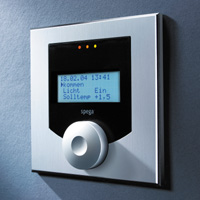


Room control unit CITIB-AMX control panel Nest Learning Thermostat
Early home automation began with labor-saving machines. Self-contained electric or gas powered home appliances became viable in the 1900s with the introduction of electric power distribution and led to the introduction of washing machines (1904), water heaters (1889), refrigerators, sewing machines, dishwashers, and clothes dryers.
In 1975, the first general purpose home automation network technology, X10, was developed. It is a communication protocol for electronic devices. It primarily uses electric power transmission wiring for signalling and control, where the signals involve brief radio frequency bursts of digital data, and remains the most widely available. By 1978, X10 products included a 16 channel command console, a lamp module, and an appliance module. Soon after came the wall switch module and the first X10 timer.
By 2012, in the United States, according to ABI Research, 1.5 million home automation systems were installed.
According to Li et. al. (2016) there are three generations of home automation:
- First generation: wireless technology with proxy server,
- Second generation: artificial intelligence controls electrical devices,
- Third generation: robot buddy "who" interacts with humans, Robot Rovio, Roomba.
Applications and technologies
- Heating, ventilation and air conditioning (HVAC): it is possible to have remote control of all home energy monitors over the internet incorporating a simple and friendly user interface.
- Lighting control system
- Appliance control and integration with the smart grid and a smart meter, taking advantage, for instance, of high solar panel output in the middle of the day to run washing machines.
- Security: a household security system integrated with a home automation system can provide additional services such as remote surveillance of security cameras over the Internet, or central locking of all perimeter doors and windows.
- Leak detection, smoke and CO detectors
- Indoor positioning systems
- Home automation for the elderly and disabled
Implementations
Internet enabled cat feeder
- A WiFi network connected to the internet can be vulnerable to hacking.
- Technology is still in its infancy, and consumers could invest in a system that becomes abandonware. In 2014, Google bought the company selling the Revolv Hub home automation system, integrated it with Nest and in 2016 shut down the servers Revolv Hub depended on, rendering the hardware useless.
Historically systems have been sold as complete systems where the consumer relies on one vendor for the entire system including the hardware, the communications protocol, the central hub, and the user interface. However, there are now open source software systems which can be used with proprietary hardware.
Protocols
There are a wide variety of technology platforms, or protocols, on which a smart home can be built. Each one is, essentially, its own language. Each language speaks to the various connected devices and instructs them to perform a function.The automation protocol transport has involved direct wire connectivity, powerline (UPB) and wireless hybrid and wireless.


There are many benefits of adding your lifestyle to have your own smart home services Front particularly in areas such as safety, comfort and entertainment. In this article we covered the many benefits that we can expect in the new view of the Smart Home.Challenges to install home automation system is to balance the complexity of the hardware on the usability of the system. When planning your smart home, it is important you consider the following factors;It may seem like the most obvious answer, but one of the main reasons that people want a fully automated smart home, because it adds to the "wow factor" to their lifestyle. Smart homes typically have a polished modern appearance through clever use of the touch screen, remote control and integrated electronic Device are often used to control blinds, lights, audio equipment, or almost anything.During the planning of smart home designers determine what equipment will be used and where and cables are pre - wired into the wall cavity during the build. Let's face it, no one can ruin the look of a home cinema over the messy audio or power cables running from the back of an LCD panel and down the wall to the AV equipment.Smart home has the ability to make home life easier and much more convenient for the owner. In a world that is so demanding of our time, which would not be happy to be in control of entertainment, lighting and temperature of the room or even on their iPhone? What about using automatic occupancy sensors and lighting time, so as soon as you enter the room lights turn on? or switched on ready for your night at the same time each day relative to the time of sunset and the prevailing light level?Home Automation enables presetting simple 'life scenes' to your day, a mix of lighting, the room configuration, temperature and entertainment options that fit your lifestyle at a particular time. For example, if you like hosting a dinner party then you can easily configure a "dinner party" scene in your touch screen, so at the push of a button the lights dim, the music fades in, the curtains close and the temperature is set to be just right.Everyone needs to feel safe in their homes and installed properly Home automation can also provide the owner with increasing peace of mind. If you are at work or away on vacation, your smart home can alert you to what's going on with your home security. You can even activate or deactivate the security of your home and allow the entry of contractors, while ensuring their safe movement monitored by two surveillance cameras, alarm or occupancy multi-zoned system internally.Security systems can also be built to provide instant relief in emergency situations, for example, not only can residents were woken by the fire alarm notifications, smart home can also open the door, call the fire department and lit the path to salvation, all automatically.Future-proof design adds value to your property - with rising energy costs, future proofing your home's energy efficiency eg good financial sense. Ask yourself, "Would not it be better to move to my new home and have a perfect picture quality in every room of the day?" Or, let the children have their own mobile phone or the ability to select or stream their own music in every bedroom.By having all the appropriate digital cable attached during the development process, allowing you to move and start enjoying the full benefits of Smart Home soon be easily accessible TV, music, Internet and telephone in every room. No mess, no fuss and no need to arrange another contractor to come after when you've settled in a house A true 'smart Wired' has significant assets over a standard home in the vicinity, leading to :. -Probably not the most important factor when it first decided to improve your lifestyle with the installation of Smart Home, but it is comforting to know that your investment in Smart Home and Home Automation technology will add much to the inherent long-term value of your home. Savvy buyers understand the lifestyle benefits provided by the automated home system and will appreciate your home more tolerable than 'old technology' similar homes in your close vicinity.

The connected everything: Your ultimate smart home of the future
The internet of things revolution is already being televised. Our houses are already becoming smart homes – but there's so much more to come. Forget the current crop of smart thermostats and smart security systems – the real smart home of the future is a learning ecosystem, that's aware of your habits and movements, using information from your wearables and scores of connected sensors to transform your life forever.So let us take you on a guided tour of Wareable's house and discover the devices set for your home of the future.
The bedroom
Where one normally starts one's day, provided the previous evening was nothing too heavy, the bedroom has been quite the focus for wearable research. Every device under the sun wants to tell you how well you're sleeping but these are the three with the ideas of your comfort in the right place.
Sleep Number SleepIQ
Most wearable sleep trackers aren't that good. Of a questionable bunch, the best is Bed dit but even that one could get foxed if you share a bed with your partner. Instead, the Sleep Number beds come with monitoring technology integrated. They'll tell you how long you were down, how much you moved, the depth of your slumber, your heart rate and breathing patterns. On top of that, you can also find out which mattress settings on this connected cot best suit your body type and needs.
Hush ear plugs
It's one thing to measure the details of your sleep environment but that's as far as most sleep trackers go. Fortunately, the Hush smart ear plugs are in development and they're here to block out your noisy neighbours and your snoring partner. Connected to your mobile, they keep aural pollution at bay while also transmitting the alarms and notifications from your phone so that you don't miss your train to work. There's gentle sounds to help you sleep, should you wish, what we'd love to see in the future is some active sound cancellation.
wake up with sweet and fresh
The bathroom

Sophisticated brush your teeth
Stool-analysing toilet

KIDS ROOM

MON BABY

BleepBleeps


Kitchen
ChefBot Kitchen Scale
Living Room
It's big, it's here and at the moment it makes people pull funny faces and/or throw up. It might be early days for the Oculus Rift but no smart home of the future will be without one. Whether for creating a virtual chatroom where you can meet your friends, putting you into the front row at a concert or gaming itself, this is the VR wearable that begins it all.
We're not convinced that you're going to want to be sprinting around some first person shooter game world in this 360 treadmill but it will provide a much needed way of exploring virtual space without the danger of walking into your walls. If your body and your eyes believe it, then your mind will most certainly follow.
With the release of Swipe the Vote in spring 2016, Tinder, the ultimate hook-up app, broke new ground in the United States by claiming to be able to match young voters with their dream-perfect presidential candidate. The matchmaking app tries to make voting sexy by employing to representative politics its same cut-to-the-chase dating method.
Who wants to read up on candidates’ policies, attend rallies or even watch a debate? You just want to jump into the bed of democracy with the one who turns you on politically, right? Who would bother to vote in the future if a set of sophisticated algorithms just identified, by trawling your data mine, your ideal candidate?
Once upon a time there was a www…
In the past two decades, we have observed how the web has evolved from an oddity to a tool used in different phases of electoral strategies.The first U.S. presidential campaign website, for example, went online in 1995. It was a modest website consisting of a few photos and statements, ordering instructions for campaign merchandise and an email link for interested voters to contact the campaign. The Democratic primary candidate Pat Paulsen made it, running against Bill Clinton. The use of the new technology did not particularly help the underdog candidate to rise up in the competition.
In 2004, another Democratic candidate, Howard Dean, used the internet more effectively. He pioneered internet-based fundraising and grassroots organizing. The strategy was centered on mass appeal to small donors and was more cost-efficient than the more expensive method of contacting fewer potential larger donors. Dean also promoted active participatory democracy among the general public through online outreach.
…but the www might become a wtf
As was the case with the early rise of the internet, the emergence of the so-called Internet of Things is set to become a game changer. And young people are likely to be the main target audience, as is the case with the Tinder widget for the upcoming U.S. presidential elections.The basic idea behind the Internet of Things is that any device with an on-and-off switch can be connected to the internet. Forecasts indicate that 6.4 billion connected devices will be in use worldwide by the end of 2016, up 30 percent from 2015, and will reach 20.8 billion by 2020. These figures show how massive this technological change is going to be. Deeper changes will happen, however, for the entire political industry. The availability of a wealth of data will create a new ground for how decisions will be made by democratically accountable politicians.
A set of sophisticated algorithms could automatically calculate, through data coming from our own objects and wearable devices, our supposed political preferences.
Going further, a set of sophisticated algorithms could automatically calculate, through data coming from our own objects and wearable devices, our supposed political preferences. These data could be sent to decision makers seamlessly, making voting obsolete. Such sets of algorithms could potentially even have unlimited access to the physical activity and the things that any given citizen would own.
To complete this imaginary dystopian scenario, a massive big data processor could then calculate the optimal mix of policies ranked according to the behaviors and choices of people everyday.
What would be governments’ reactions?
Plausibly to dismiss all elected officials. Act via spokespersons with simple job descriptions. To announce daily the results of the calculations of the algorithm. To dispatch them to the director generals of ministries. To smile at cameras. To look good.
Could this be the case of our governance systems in, let’s say, 20 years?
Wait, what?
This makes me think again about the early 1990s. We truly thought then, at some point, that we would have been flooded by MiniDiscs and Digital Compact Cassettes. But we weren’t.In the same fashion, many political analysts at that time were predicting an end of representative democracy caused by deliberative democracy through the internet. But we never really saw that happen. And it would be hard to predict or prove that this new wave of technological progress will lead to a dramatic change in political organization.
We have seen dystopian societies run by men and not by machines many times in history.
However, some political formations have grown around this concept. The Five Stars Movement became the second largest group in Parliament in Italy after the national elections in 2013. The Pirate Party in Germany is promoting the concept of “liquid democracy,” with some success, as a hybrid system whereby an electorate vests voting power in delegates rather than in representatives.
And that’s when youth should get up
Young activists involved in these matters will have to keep these changes in mind in order to retain their influence over the way policies will be drafted, decided, implemented and evaluated in the future. They will have to cope with the tension between the risk of a technocratic and dystopian future, the promise of a dream-like utopia or tech-enhanced business as usual. Often reality has proven to lie in between.Dystopian futures could become real, even if humans keep control of policy making. We have seen dystopian societies run by men and not by machines many times in history. It is a reminder that politics is a human responsibility, without stigmatizing industrial and technological development. The society imagined by Samuel Butler in 1872 in “Erewhon” was no worse, in some aspects, even if it totally banned the machines for fear that they would take over following Darwinian evolution.
In the case of the Industrial Internet, the political discourse and narratives will shape its further development and goals. Young activists play a pivotal role in shaping such discourse. The most important mission they have is to transmit such goals and discourses in an understandable way, in order to keep their fellow peers and all the citizens aware of the consequences of the changes that are happening so we can ultimately keep a transparent and democratic oversight over the future of society.


What Does Smart Home Monitoring Offer?
Total Connection
- Watch live video of your home wherever you are.
- Receive text messages and email alerts as events occur.
Total Protection
- Arm and disarm your security system anytime, wherever you are.
Total Control
- Adjust your thermostats and lighting when you’re away from home.
- Lock and unlock your doors remotely.

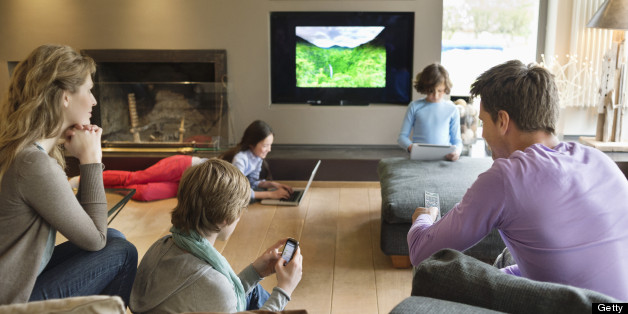

The “Internet of Things” and “smart home” devices aren’t just a trend, they’re the future. These emerging technologies are great for a number of reasons, the biggest of which are convenience and savings. Connecting devices in your house to each other and to the internet gives you a level of control and capability that seemed like science fiction just a few short years ago. And beyond that, smart home devices like smart thermostats and other gadgets can save you a ton of money by optimizing your house or apartment.
But if you thought the Nest Thermostat was smart, wait until you meet the CURB Home Energy Monitoring System.
Here’s how the team behind CURB describes it: “CURB is the most powerful and intelligent integrated hardware/software system for visualizing and managing energy in residential and commercial settings. 18 dedicated sensors give you real-time information about your home’s power consumption, electrical vehicle charging and solar production. Integration with Samsung’s Smart Things platform enables you to directly control appliances on the go. Fortune magazine identified CURB as an essential component of every smart home. “It’s the smartest way to start… An instant money saver.” Power your life. Smarter.”
And here are some more key details from the product page:
- Real-time home energy monitoring system; with 18 sensors & Home Plug adapter
- Attaches to your breaker panel, showing individual appliance energy consumption
- Monitors your solar power, showing how much your home is producing
- Controls your Smart Things devices from within the CURB app
- Works on iOS and Android devices, plus web for detailed desktop analysis
X . IIIIIIIIII
The home of tomorrow will run on direct current
In fact, the home of today primarily runs on DC. We just have all this AC stuff running between it.
Look around your house. If you have, like me, banished incandescent bulbs, what is running on alternating current as it comes out of your walls? Outside of your kitchen or laundry, you might have a vacuum cleaner or a hair dryer. Otherwise, every thing you own — from your computer to your light bulbs to your sound system — is running on direct current. There is a wall-wart or a brick or a rectifier in the light bulb base that converts the AC to DC, wasting energy and money in the process. IKEA was kind enough to put its device in a transparent package. How much of the cost of the $20 lamp covers the yellow transformer and capacitors and diodes in this little thing?Alternating current made sense once; that’s why Edison lost to Westinghouse in the current wars. Alternating current was easy to transform to different voltages, and higher voltages mean you can carry more power longer distances through smaller wires. And we needed a lot of power to run those incandescent bulbs, which are really little electric furnaces that gave out about 4 percent of the energy used as visible light. The new labor-saving appliances had little AC motors. Even the old television set took a lot of power, firing up those vacuum tubes and big electron guns in the picture tube. All that power can be dangerous, so we have licensed electricians running dozens of lines back to circuit breakers, all with an extra conductor just as a ground wire. Oh, and we need outlets every 12 feet along the walls so that dangerous extension cords aren’t needed. Total it all up, and you have 400 pounds of copper in the average house. Back at the mine, it takes a ton of copper ore to make 10 pounds of copper, so it takes 40 tons of ore (coincidentally the weight of an average house) to make the copper for one house. About 40 percent of the copper used in America goes into our buildings and houses. There is also the worry that we are approaching peak copper, with production peaking about 2030.
For what? To be turned into direct current and fed through thin little wires in milliampere quantities to run our computers and clock radios and LED bulbs. Your electric drill is probably cordless and DC, and if you have a Roomba, AC isn’t even running your vacuum. There is no good reason to have expensive and dangerous AC wiring in a house or office anymore.

The typical office (Photo: EMerge Alliance)
In fact, in the office environment, there are a lot of people working to get rid of AC. The EMerge Alliance promotes a 24-volt DC standard that is designed to “reduce energy consumption through state of the art device controls and solid state lighting.” Because solar panels produce DC and batteries store DC, it will “facilitate the direct connection and use of energy from solar, wind or other alternative energy sources.” The alliance is going after the residential market too. Chairman Brian Patterson says in a press release:
Will USB be your new home wiring? Then there is the new high-power USB Power Delivery standard 4.0, which can pump out 100 watts. All those bricks and power cables disappear as you plug in your devices and get power and data. You could build a smart home of interconnected devices that talk to each other without less dependable and secure WiFi, and your wiring becomes the backbone of the Internet of Things.“DC power distribution would not only maximize the efficiency and ROI of rooftop solar panels by enabling them to directly power consumer electronics, appliances, LEDs and electric vehicles (EVs) without conversion losses, it could also give homeowners a choice to either store excess DC power or continue selling it back to power companies.”


Wiring wouldn’t have to be installed by electricians inside the walls; it could be stuck on the wall like tape and just painted over. It wouldn’t have to be childproofed; it could be anywhere you wanted it. And everything that you plugged into it would be cheaper and more dependable because there is no transformer or rectifier turning AC into low voltage DC — it runs on it native.

Back in the kitchen and laundry, there would have to be some bigger wires to carry the loads needed to run a fridge or an air conditioner. But even they can be more efficient running on DC, thanks to Variable Frequency Drives or VFDs. According to the Electric Power Research Institute,
The Emerge Alliance claims that running DC can cut electricity use by 20 percent, simply because everything is running native, without those energy-sucking wall-warts and rectifiers. Add the up-front savings of cheaper LED bulbs and the cost of wiring the home, and the savings get much bigger. None of this is new to people who live off-grid, in RVs or on boats. They have been living in a DC world for years. However the advances in LEDs and the drop in the price of solar is making this lifestyle as comfortable as living in an on-grid home.Use of VFDs is on the rise, since controlling the speed of the motor to match demand can not only save energy but also optimize function. For example, being able to fine tune the motor speed of an air conditioner, and thus functions such as fan speed and air flow, can make room temperatures and conditions more comfortable. As motor-operated loads become increasingly controlled through VFDs — very little will remain in a house that really needs AC power.

Photo: National Park Service
Just toss the solar panels on your roof and the electric car in the garage into the mix, then you're living in a DC world without any reason to use AC at all — living on your own little micro-grid where you generate your own electricity and store it in your car. The net-zero energy home of the future will run on DC.


 ( RINGING ON BOAT AT HOMES )
( RINGING ON BOAT AT HOMES ) 
Home automation or smart home is the residential extension of building automation and involves the control and automation of lighting, heating, ventilation, air conditioning (HVAC), appliances, and security. Technology is not only confined to home but has enormous potential in Offices, auditorium, hotels, restaurants, stadium, conference room, party hall, schools, hospitals and enterprises.
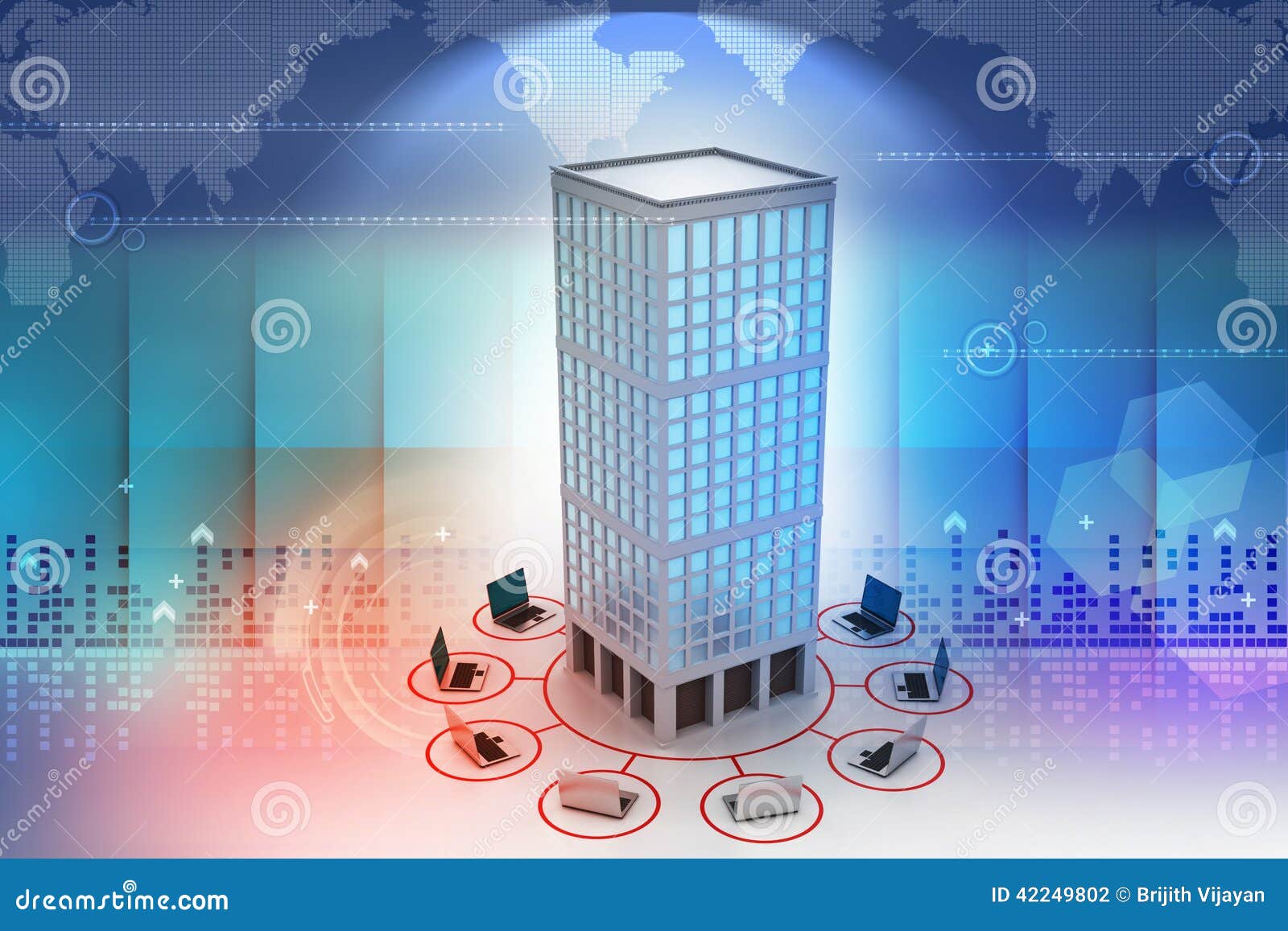



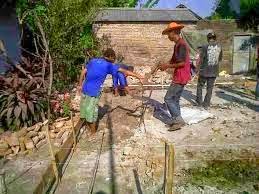


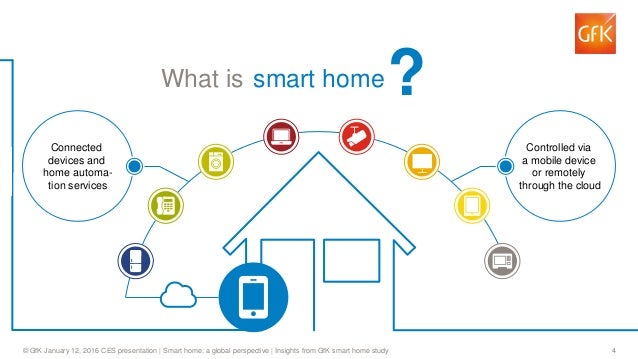
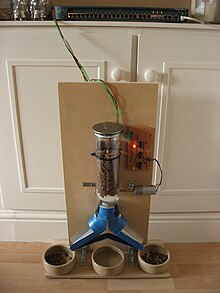











Really I like this blog because it have nice information. and Piled Raft Foundation is a small family run business offering a professional and expert service of piling and groundwork throughout Essex, Hertfordshire and London.
BalasHapus